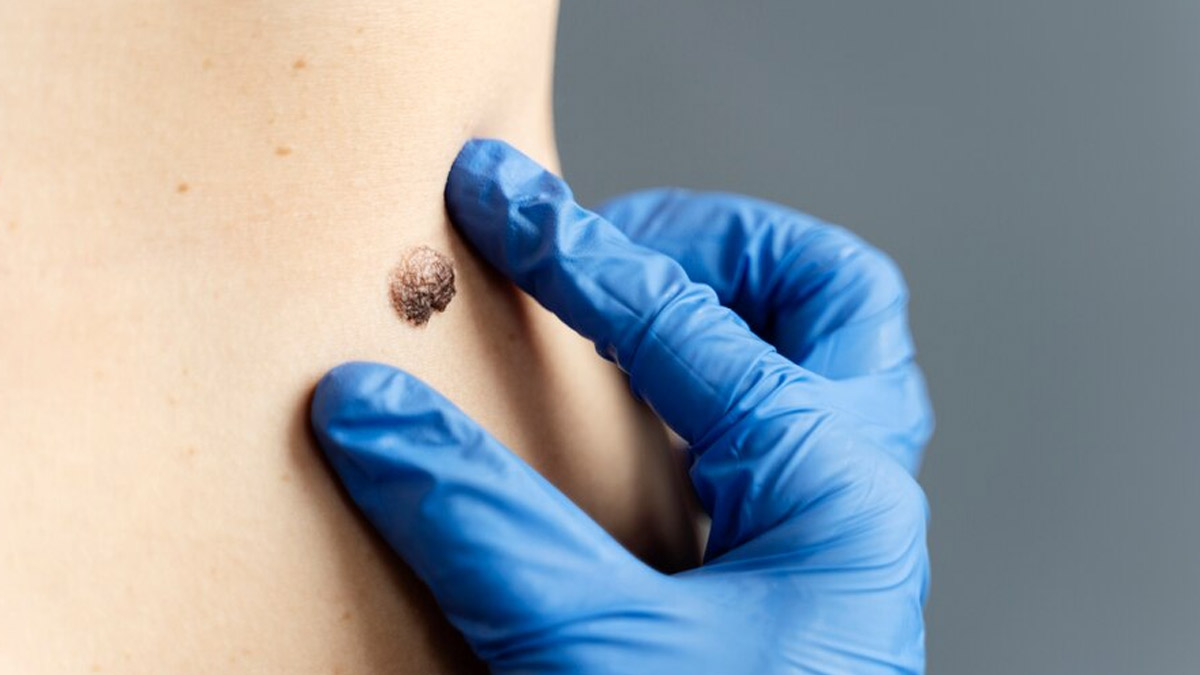
May is Skin Cancer Awareness Month, dedicated to educating people, spreading awareness, and debunking myths and misconceptions about the disease.
Our skin, which is the largest organ in the body, is extremely sensitive to outside entities, especially the sun. In fact, according to the US Centers for Disease Control and Prevention (CDC), most skin cancers are caused by too much exposure to Ultraviolet (UV) rays. Therefore, the health body emphasises protecting the skin from UV rays all year round, not just during the summer.
Table of Content:-
One of the best ways to do so is by applying sunscreen regularly and frequently, says Dr Arun Kumar Giri, Director - Surgical Oncology, Aakash Healthcare, New Delhi. In an interaction with the OnlyMyHealth team, he delves deep into the importance of skin cancer prevention, the role of sunscreen usage, and symptoms that can help identify the condition.
Also Read: Explainer: Can Sunscreen Protect Against Skin Cancer?
Common Skin Cancer Symptoms

Skin cancer can be easy to miss, especially if you do not pay attention to any new changes in the skin. Some of the common symptoms to watch out for include:
- New or changing spots on skin that last for more than two weeks.
- Changes in the size, shape, or colour of an existing spot
- A painful or itchy spot
- A non-healing sore that bleeds or forms a crust
- A shiny, red, or skin-coloured bump on the skin's surface
- A red, rough, or scaly spot that you can feel
- A growth with a raised border and a central crust or bleeding
- A growth that resembles a wart
- A growth that resembles a scar but lacks a clear border
The Role Of Sunscreen Usage
According to the Skin Cancer Foundation, sunscreen reduces overall UV exposure and lowers the risk of skin cancer and sun damage.
UV exposure can result in sunburn, early ageing, and a higher chance of developing skin cancer, among other skin issues, says Dr Giri, who adds that regular use of sunscreen goes a long way to bringing down our risk of these problems and keeping our skin looking and feeling healthy inside out.
“According to studies, using SPF 15 sunscreen on a daily basis as recommended will cut your risk of melanoma by 50% and squamous cell carcinoma (SCC) by around 40%,” the doctor notes.
How To Pick The Right Sunscreen![]()
When selecting a sunscreen, make sure to check the label and go for a broad-spectrum sunscreen, which means it protects you from both types of harmful UV rays—the UVA rays and the UVB rays.
Furthermore, it is recommended to select a sunscreen with an SPF rating of 30 or higher.
“Look for words like ‘Water Resistant,’ which means the sunscreen will stay on wet or sweaty skin for a while before you need to reapply.
“Make sure to apply sunscreen approximately 15 minutes before going outdoors, as it takes time for your skin to absorb the sunscreen and protect you. Lastly, apply sunscreen to all skin not covered by clothing, like your neck, face, ears, feet, and legs,” Dr Giri recommends.
Other Factors That Can Increase Your Risk Of Skin Cancer

Besides sun exposure, other factors that can increase your risk of skin cancer include:
- Older age
- A family history of skin cancer
- A personal history of skin cancer
- Having a lighter natural skin colour
- Blue or green eyes
- Skin that burns, freckles, reddens easily, or becomes painful in the sun
- Blond or red hair and having certain types and a large number of moles.
Conclusion
Sunscreen usage is essential for sun safety and protection. It can even reduce your risk of skin cancer to a considerable extent. In addition, you can also take other measures, such as staying in shade, wearing long-sleeved clothing to cover your arms and legs, using a hat to cover your head and neck, and wearing sunglasses. These precautions can also minimise sun damage and reduce your risk of skin cancer.
Also watch this video
How we keep this article up to date:
We work with experts and keep a close eye on the latest in health and wellness. Whenever there is a new research or helpful information, we update our articles with accurate and useful advice.
Current Version
